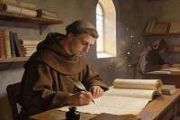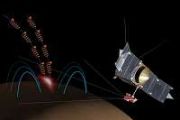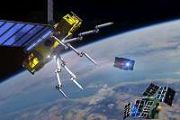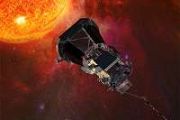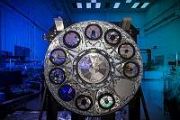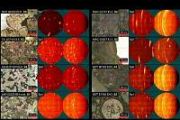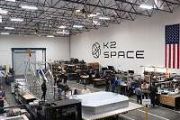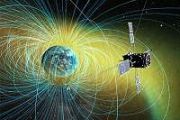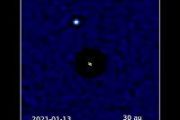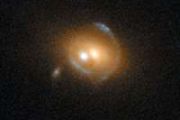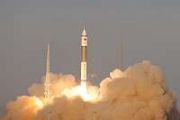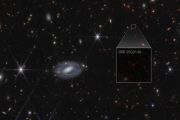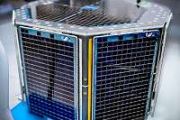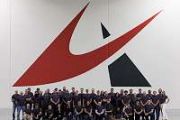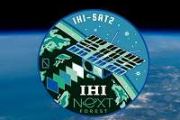
Copernical Team
Fossil site is 'Rosetta Stone' for understanding early life
 Leading edge technology has uncovered secrets about a world-renowned fossil hoard that could offer vital clues about early life on earth.
Researchers who analysed the 400 million-year-old-cache, found in rural north-east Scotland, say their findings reveal better preservation of the fossils at a molecular level than was previously anticipated.
Fresh scrutiny of the exquisitely preser
Leading edge technology has uncovered secrets about a world-renowned fossil hoard that could offer vital clues about early life on earth.
Researchers who analysed the 400 million-year-old-cache, found in rural north-east Scotland, say their findings reveal better preservation of the fossils at a molecular level than was previously anticipated.
Fresh scrutiny of the exquisitely preser Cleveland Clinic and IBM unveil first quantum computer dedicated to healthcare research
 Today, Cleveland Clinic and IBM jave officially unveiled the first deployment of an onsite private sector IBM-managed quantum computer in the United States. The IBM Quantum System One installed at Cleveland Clinic will be the first quantum computer in the world to be uniquely dedicated to healthcare research with an aim to help Cleveland Clinic accelerate biomedical discoveries.
The unveil
Today, Cleveland Clinic and IBM jave officially unveiled the first deployment of an onsite private sector IBM-managed quantum computer in the United States. The IBM Quantum System One installed at Cleveland Clinic will be the first quantum computer in the world to be uniquely dedicated to healthcare research with an aim to help Cleveland Clinic accelerate biomedical discoveries.
The unveil THE NEW GUYS: The Historic Class of Astronauts that Changed the Face of Space Travel
 The New Guys is a remarkable book that recounts the stories of the 1978 class of civilian astronauts, who were chosen by NASA to break the barriers of space travel. Meredith Bagby shares their never-before-told stories of pioneers who shattered glass ceilings, overcame racial barriers, and literally changed the face of space travel.
This class, nicknamed "The New Guys," consisted of Sally
The New Guys is a remarkable book that recounts the stories of the 1978 class of civilian astronauts, who were chosen by NASA to break the barriers of space travel. Meredith Bagby shares their never-before-told stories of pioneers who shattered glass ceilings, overcame racial barriers, and literally changed the face of space travel.
This class, nicknamed "The New Guys," consisted of Sally Fermi captures dynamic gamma-ray sky in new animation
 Cosmic fireworks, invisible to our eyes, fill the night sky. We can get a glimpse of this elusive light show thanks to the Large Area Telescope (LAT) aboard NASA's Fermi Gamma-ray Space Telescope, which observes the sky in gamma rays, the highest-energy form of light.
This animation shows the gamma-ray sky's frenzied activity during a year of observations from February 2022 to February 202
Cosmic fireworks, invisible to our eyes, fill the night sky. We can get a glimpse of this elusive light show thanks to the Large Area Telescope (LAT) aboard NASA's Fermi Gamma-ray Space Telescope, which observes the sky in gamma rays, the highest-energy form of light.
This animation shows the gamma-ray sky's frenzied activity during a year of observations from February 2022 to February 202 Powerful solar eruption on far side of Sun still impacted Earth
 A massive eruption of solar material, known as a coronal mass ejection or CME, was detected escaping from the Sun at 11:36 p.m. EDT on March 12, 2023.
The CME erupted from the side of the Sun opposite Earth. While resarchers are still gathering data to determine the source of the eruption, it is currently believed that the CME came from former active region AR3234. This active region was o
A massive eruption of solar material, known as a coronal mass ejection or CME, was detected escaping from the Sun at 11:36 p.m. EDT on March 12, 2023.
The CME erupted from the side of the Sun opposite Earth. While resarchers are still gathering data to determine the source of the eruption, it is currently believed that the CME came from former active region AR3234. This active region was o Scientists have new tool to estimate how much water might be hidden beneath a planet's surface
 In the search for life elsewhere in the Universe, scientists have traditionally looked for planets with liquid water at their surface. But, rather than flowing as oceans and rivers, much of a planet's water can be locked in rocks deep within its interior.
Scientists from the University of Cambridge now have a way to estimate how much water a rocky planet can store in its subterranean reser
In the search for life elsewhere in the Universe, scientists have traditionally looked for planets with liquid water at their surface. But, rather than flowing as oceans and rivers, much of a planet's water can be locked in rocks deep within its interior.
Scientists from the University of Cambridge now have a way to estimate how much water a rocky planet can store in its subterranean reser The first bubble in the intergalactic stew
 Astrophysicists using W. M. Keck Observatory on Maunakea in Hawai?i have discovered a galaxy protocluster in the early universe surrounded by gas that is surprisingly hot.
This scorching gas hugs a region that consists of a giant collection of galaxies called COSTCO-I. Observed when the universe was 11 billion years younger, COSTCO-I dates back to a time when the gas that filled most of th
Astrophysicists using W. M. Keck Observatory on Maunakea in Hawai?i have discovered a galaxy protocluster in the early universe surrounded by gas that is surprisingly hot.
This scorching gas hugs a region that consists of a giant collection of galaxies called COSTCO-I. Observed when the universe was 11 billion years younger, COSTCO-I dates back to a time when the gas that filled most of th Spring Past the Marker Band: Sols 3776-3777
 Our Tapo Caparo drill campaign is officially concluded and our wheels are turning again! Specifically, we're back on the strategically-created route up Aeolis Mons (aka Mount Sharp), "paving" the path as we go. As a personal habit, when we leave a distinct area I like to look back at the road behind and all we've accomplished along the way. So, a quick sentimental summary... we drove our wheels
Our Tapo Caparo drill campaign is officially concluded and our wheels are turning again! Specifically, we're back on the strategically-created route up Aeolis Mons (aka Mount Sharp), "paving" the path as we go. As a personal habit, when we leave a distinct area I like to look back at the road behind and all we've accomplished along the way. So, a quick sentimental summary... we drove our wheels Geologists Love a Good Contact: Sols 3773-3775
 With a jam packed three-sol plan on her plate, Curiosity won't have time to kick back and relax this weekend! The rover is heading south across the Marker Band and is currently sitting in front of a lovely view that includes a contact between two types of bedrock.
The lower section of bedrock consists of very thin, horizontal layers, as though you were looking at the edge of a thick stack
With a jam packed three-sol plan on her plate, Curiosity won't have time to kick back and relax this weekend! The rover is heading south across the Marker Band and is currently sitting in front of a lovely view that includes a contact between two types of bedrock.
The lower section of bedrock consists of very thin, horizontal layers, as though you were looking at the edge of a thick stack NASA connects all major structures of Artemis II Moon Rocket Core Stage
 Teams at NASA's Michoud Assembly Facility in New Orleans have fully integrated all five major structures of the Space Launch System (SLS) rocket's core stage for Artemis II, the first crewed Artemis mission that will send four astronauts around the Moon and return them home. Technicians joined the engine section to the rest of the rocket stage March 17. Next, teams will integrate the four RS-25
Teams at NASA's Michoud Assembly Facility in New Orleans have fully integrated all five major structures of the Space Launch System (SLS) rocket's core stage for Artemis II, the first crewed Artemis mission that will send four astronauts around the Moon and return them home. Technicians joined the engine section to the rest of the rocket stage March 17. Next, teams will integrate the four RS-25 

